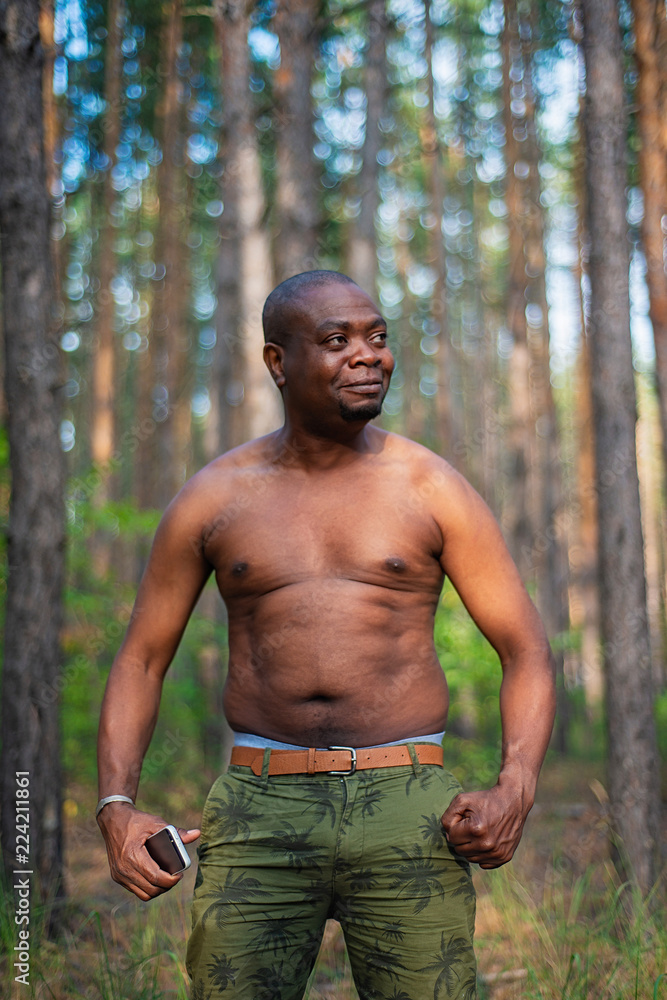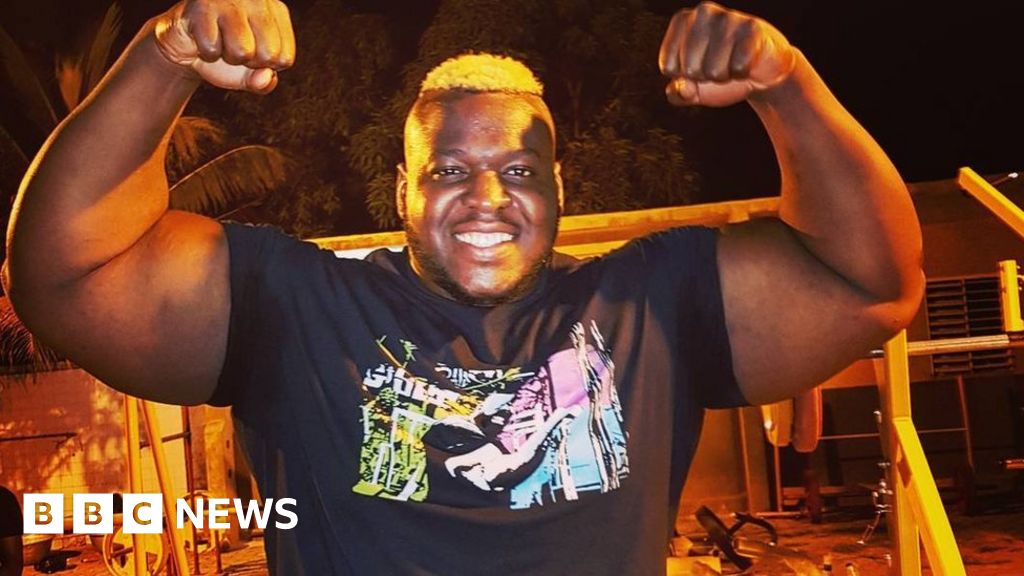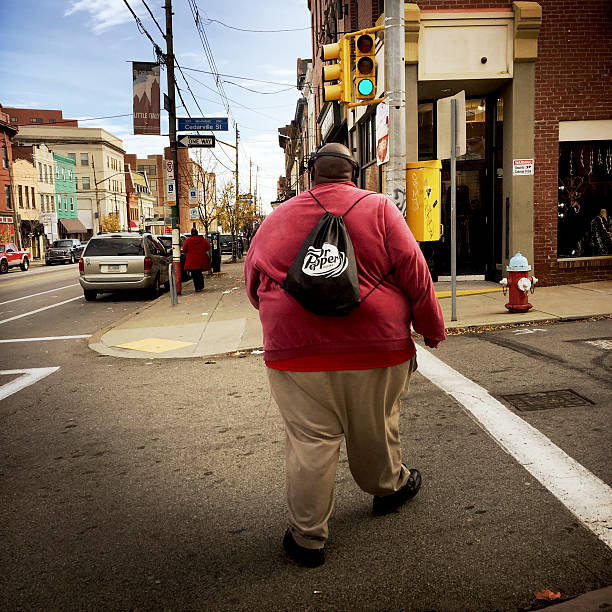Are we truly seeing authentic representation, or are we merely consuming caricatures? The quest for genuine portrayals of diverse individuals in media and advertising is more critical now than ever before, as the line between representation and exploitation continues to blur.
The internet is awash with images, a vast ocean of visual content promising to cater to every conceivable need. Stock photo sites, in particular, are goldmines for project creators and campaign developers seeking to visually represent diverse groups of people. However, a disturbing trend lurks beneath the surface: the commodification and potential misrepresentation of specific demographics. The repetitive searches for terms like "fat black man," often coupled with either hyper-positive or shockingly negative descriptors, highlight a complex issue of representation, bias, and the pervasive influence of stereotypes in visual media.
| Category | Information |
|---|---|
| Full Name | Jerod Mixon |
| Birth Date | May 24, 1981 |
| Birth Place | Port Hueneme, California, USA |
| Occupation | Actor |
| Notable Works | Me, Myself & Irene (2000), Old School (2003), The New Guy (2002) |
| Reference | IMDb Profile |
Consider the sheer volume of readily available images. Websites like Getty Images, Freepik, Pixabay, and others boast libraries containing millions of photographs and illustrations. These platforms are driven by search terms, and the consistent querying for "fat black man" reveals a demand, a market for these images. While there's nothing inherently wrong with providing visual content, the context and application of these images can be deeply problematic. The repetition of the search term across multiple platforms emphasizes the commodification and potential for exploitation. Are these images being used to promote diversity and inclusion, or are they reinforcing harmful stereotypes? The answer, unfortunately, is often both.
- Beau Cassidy David Cassidys Son Life Career Legacy
- Molly Ringwalds Net Worth From 80s Icon To Todays Fortune
The descriptors attached to these images further complicate the issue. On one hand, there's a push for "authentic" and "high-quality" representations, suggesting a desire for respectful and accurate portrayals. On the other hand, the internet's darker corners reveal shockingly derogatory terms used in conjunction with these searches. Words like "stupid," "ugly," "bad," and "worst" are attached, reflecting a disturbing undercurrent of prejudice and dehumanization. This juxtaposition highlights the dichotomy of representation: the struggle to portray individuals with dignity while simultaneously combating harmful stereotypes and biases.
The availability of "free" images adds another layer to the problem. While democratizing access to visual content is generally a positive development, it also lowers the barrier to entry for misuse. Individuals or organizations with malicious intent can easily download and manipulate these images to promote harmful narratives. The sheer volume of "free" imageshundreds of thousands in some casesmakes it difficult to monitor and control their use. The promise of a "free month of iStock exclusive photos" might seem enticing, but it also underscores the commercialization of representation, where individuals become commodities to be bought and sold.
The search results often yield images described as "big black men," a seemingly innocuous term that can easily veer into problematic territory. While size and race are simply descriptive characteristics, their combination can perpetuate harmful stereotypes about black men as being overly aggressive, hypersexualized, or inherently different. The sheer number of images tagged with this termover 130,000 on some platformsdemonstrates the pervasiveness of this association. Are these images being used to celebrate body positivity and diversity, or are they reinforcing harmful tropes? The answer is often unclear.
- Barry Manilow Garry Kief A Love Story Finally Revealed
- Morgan Wallen Denver Concerts Setlists Tickets More
The promise of "free big black men images to use in your next project" is alluring, but it also raises ethical questions. Who benefits from this free access? Are the individuals being portrayed fairly compensated for their image being used? Are their stories being told with respect and accuracy? The lack of transparency surrounding the origin and purpose of these images raises concerns about exploitation and the perpetuation of harmful stereotypes. The use of these images in "classroom lessons" further amplifies the potential impact, as children are particularly susceptible to absorbing stereotypes and biases from visual media.
The rise of user-generated content platforms like Pixabay adds another dimension to the issue. While these platforms offer a space for diverse voices and perspectives, they also lack the rigorous editorial oversight of traditional media outlets. This can lead to the proliferation of low-quality or even offensive content. The promise of "amazing images uploaded by the Pixabay community" is appealing, but it also comes with the risk of encountering harmful stereotypes and misrepresentations. The lack of curation and oversight can make it difficult to distinguish between authentic portrayals and harmful caricatures.
The search for "free graphic resources for fat black guy" highlights the demand for readily available visual content, but it also raises concerns about the quality and accuracy of these resources. Are these graphics created with sensitivity and respect, or are they perpetuating harmful stereotypes? The availability of "29,000+ vectors, stock photos & psd files" is impressive, but it also underscores the challenge of ensuring that these resources are used ethically and responsibly. The promise of "free for commercial use high quality images" is enticing, but it also comes with the risk of contributing to the commodification and exploitation of individuals.
The specific number of available images"40+ fat black man stock photos for free"might seem insignificant, but it's important to remember that each image represents a real person with a unique story and identity. Reducing individuals to mere commodities for commercial use is inherently dehumanizing. The repetition of the search term across multiple platforms reinforces this sense of commodification and exploitation.
The inclusion of "fat black guy on the beach" as a search term highlights the potential for visual content to perpetuate harmful stereotypes about body image and race. While there's nothing inherently wrong with depicting individuals enjoying themselves at the beach, the combination of these specific descriptors can reinforce harmful tropes about black men being lazy, irresponsible, or simply "other." The search for this specific image suggests a desire to visually represent a particular stereotype, rather than celebrating diversity and individuality.
The statement that "most of these guys have little to say on their landing pages" is particularly troubling. It suggests that the individuals being portrayed are treated as mere objects, devoid of agency or voice. Their stories are not being told, their perspectives are not being shared, and their humanity is being ignored. This lack of representation is not only disrespectful to the individuals being portrayed, but it also reinforces harmful stereotypes about black men being voiceless or insignificant.
The image of a "man, woman and dumbbell in studio portrait with plus size fitness, training and teamwork for healthcare" represents a more positive and inclusive approach to visual representation. It celebrates body positivity and diversity, while also promoting health and wellness. However, it's important to remember that even these seemingly positive images can perpetuate harmful stereotypes if they are not carefully contextualized. The individuals being portrayed should be treated with respect and dignity, and their stories should be told with sensitivity and accuracy.
The actor Jerod Mixon, born on May 24, 1981, in Port Hueneme, California, provides a crucial counterpoint to the potentially dehumanizing effects of stock photography. His roles in films like "Me, Myself & Irene," "Old School," and "The New Guy" offer glimpses into the complexities and nuances of black male identity. While his work may not directly address the issue of stock photo representation, it serves as a reminder that individuals should be seen as multifaceted human beings, not simply as visual commodities to be exploited for commercial gain.
Ultimately, the issue of representing "fat black man" in visual media is a complex one that requires careful consideration and a commitment to ethical practices. While stock photos and other visual resources can be valuable tools for promoting diversity and inclusion, they must be used responsibly and with a deep awareness of the potential for harm. It's crucial to move beyond stereotypes and caricatures, and to create visual content that celebrates the unique stories and identities of all individuals.
- Justine Batemans Husband The Untold Story Of Mark Fluent
- Salt Pepper A Guide To Usage History More Must Read


